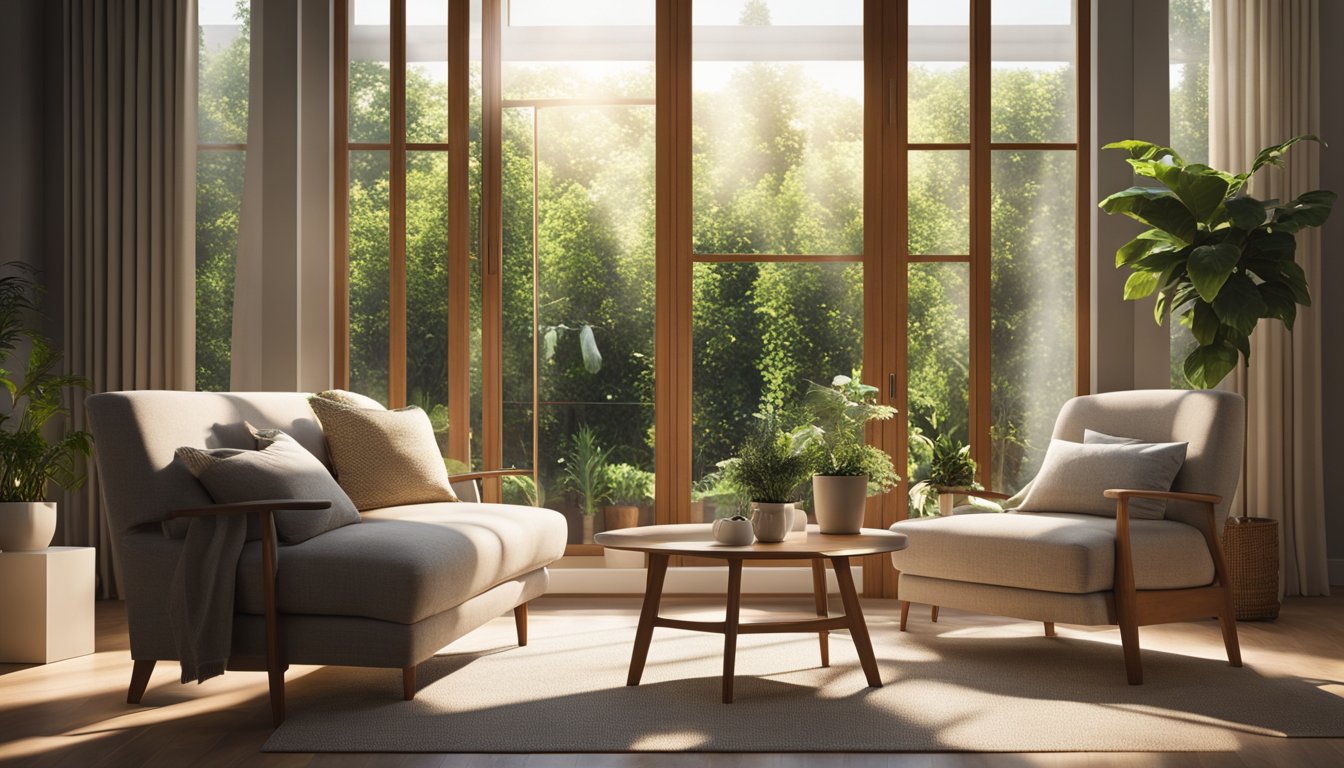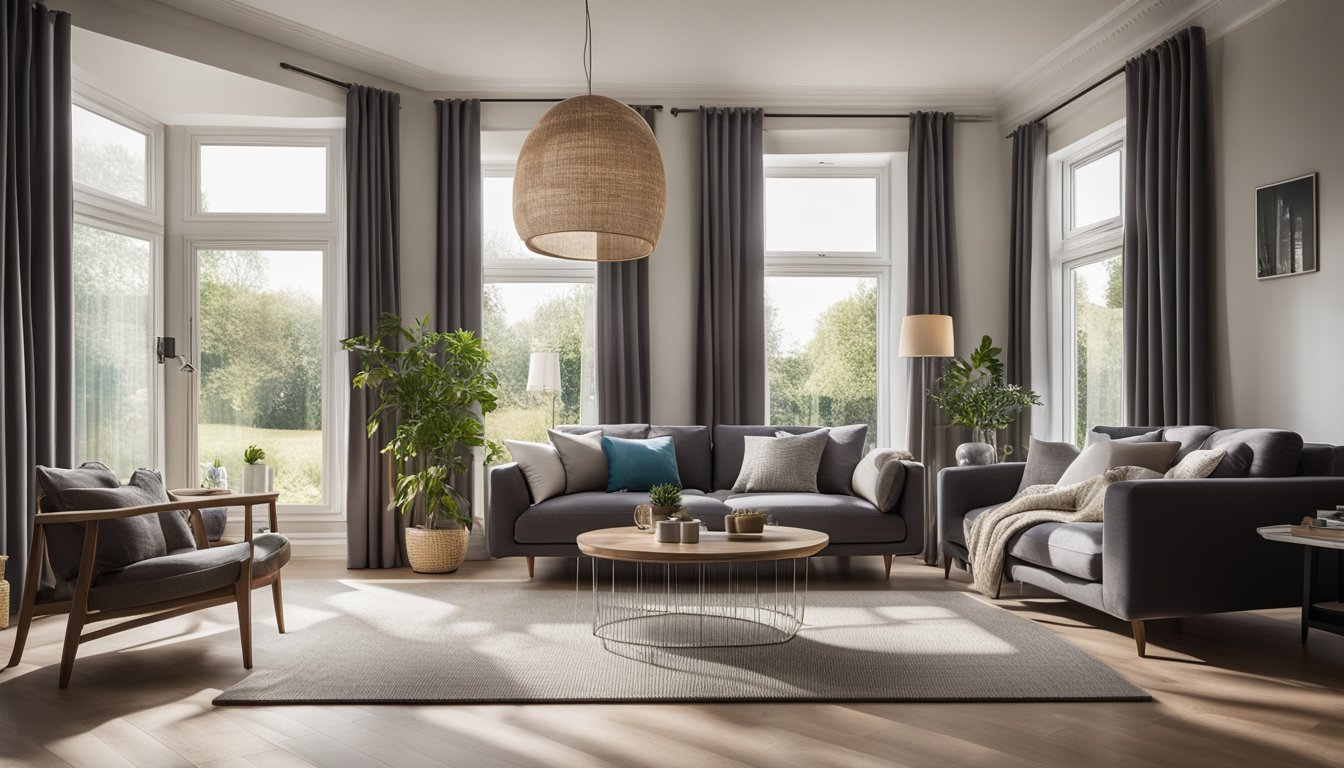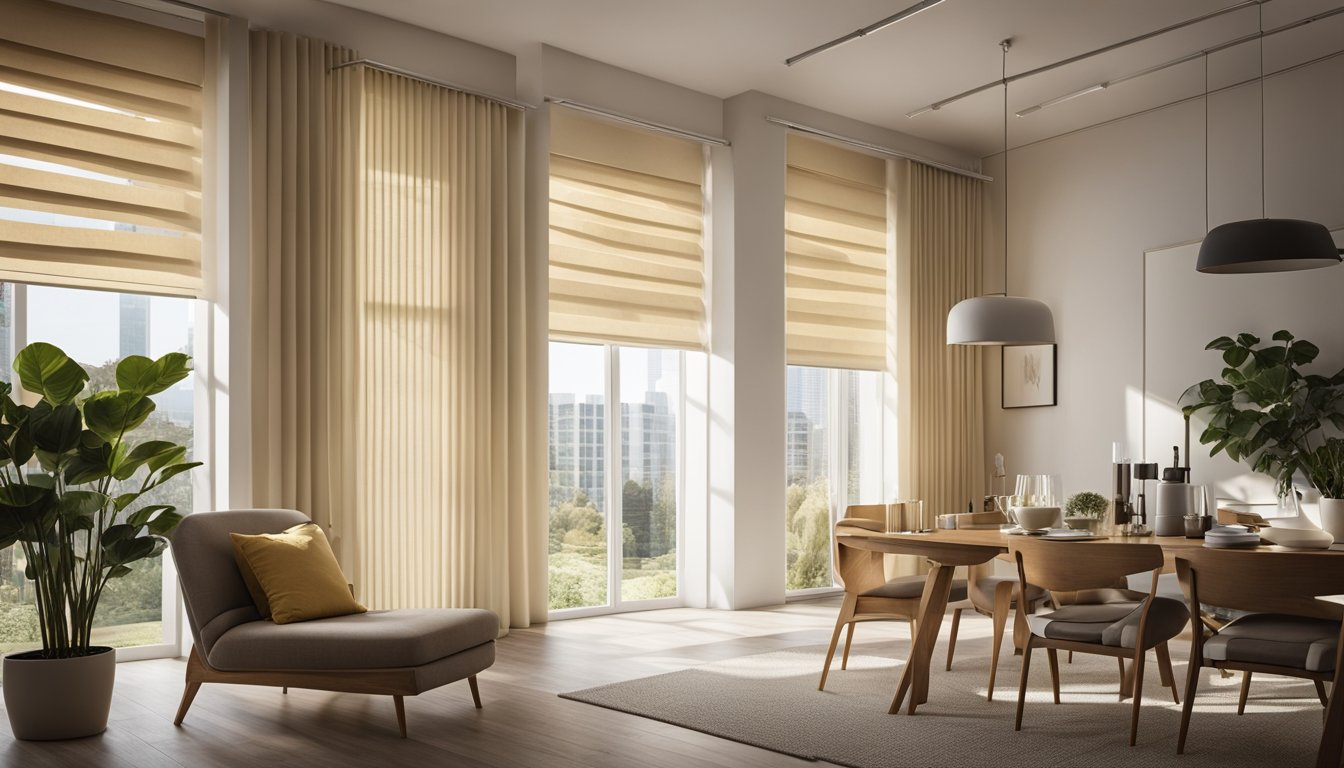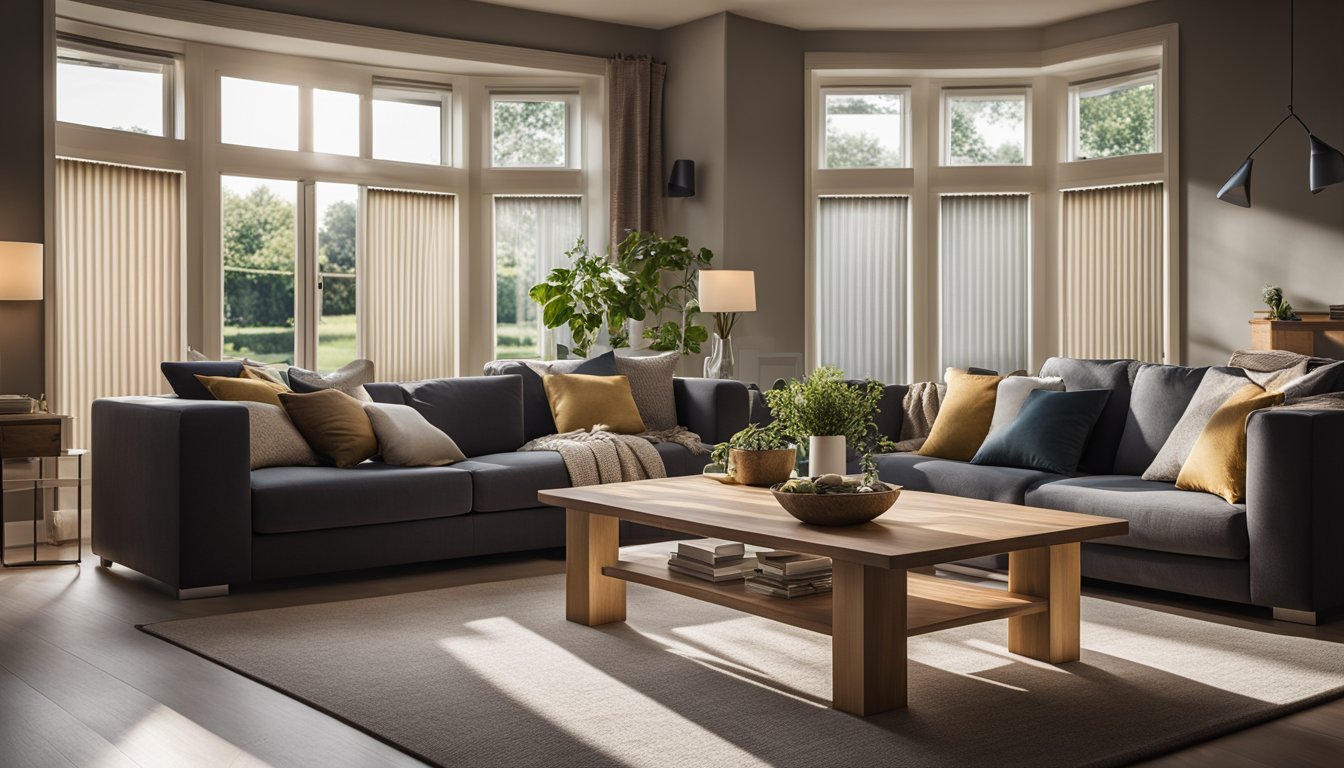Late updated: 19 Feb 2025 12:02
Written by: Eleanor Hartman
Energy-Efficient Window Coverings For UK Homes: Maximising Comfort and Savings
Enhancing the energy efficiency of our homes has become more critical than ever. One key component is selecting the right window coverings. Proper energy-efficient window coverings can dramatically reduce heat loss and lower energy bills for UK households. These coverings not only insulate your home but also ensure a comfortable indoor temperature all year round.

Blinds, curtains, and shutters are among the most popular options for energy-efficient window coverings. Each type offers unique benefits, such as improved insulation and regulation of natural light. By incorporating these coverings, we can significantly reduce the amount of energy needed to heat or cool our homes, contributing to lower energy consumption and costs.
As we explore various options, it's essential to weigh factors like the specific needs of our homes, the typical climate in our regions, and the desired comfort levels. This ensures we make informed decisions that maximize efficiency while keeping our living spaces cosy and welcoming.
Key Takeaways
- Energy-efficient window coverings help reduce heat loss and energy bills.
- Blinds, curtains, and shutters enhance insulation and regulate light.
- Consider home needs and climate for the best results.
Types of Energy-Efficient Window Coverings

Homeowners in the UK can improve energy efficiency through various window treatments. The right choices can significantly reduce heat loss and heat gain, contributing to greater comfort and energy cost savings.
Blinds and Their Role in Energy Conservation
Blinds are versatile and effective energy-efficient window treatments. Available in various styles, they help reduce heat loss in the winter and minimise heat gain in the summer. Venetian blinds offer adjustable slats, allowing us to control the amount of sunlight that enters. Vertical blinds can be closed completely for optimal energy efficiency.
When correctly installed, these window treatments create an insulating air pocket between the glass and the room, enhancing the overall thermal performance of our homes.
Shades and Their Insulating Properties
Shades are popular for their ability to insulate and regulate indoor temperatures. Cellular shades, also known as honeycomb shades, are particularly effective. They trap air in their unique cell-shaped design, creating a barrier against heat transfer.
Roller shades and Roman shades provide variations in design, adding aesthetic appeal while contributing to energy efficiency. By blocking solar heat gain, they help maintain a comfortable indoor climate throughout the year.
Curtains and Drapes for Improved Energy Performance
Curtains and drapes can dramatically improve a window's energy performance. Thermal curtains are made from heavy fabric with insulating backings, reducing heat loss during cold months and reflecting heat in warmer seasons.
Opt for drapes with multiple layers or lining for maximum impact. These window treatments offer the flexibility to match interior décor while enhancing energy efficiency. Drawing them closed during peak sunlight hours further improves performance.
Shutters and Exterior Solutions
Shutters not only add charm but also boost energy efficiency. Interior shutters, particularly plantation shutters, are effective at reducing heat loss and gain. Their moveable louvers allow precise control over light and airflow.
Exterior shutters provide an additional layer of protection and insulation. When combined with other energy-saving solutions, such as awnings, they enhance the building's capability to withstand environmental changes.
Specialised Energy-Efficient Treatments
Specialised treatments like window films and window quilts offer modern solutions. Window films reduce solar heat gain, glare, and UV exposure. Easy to apply, they’re optimal for spaces requiring natural light without the accompanying heat.
Window quilts, with their layers of fabric and reflective material, provide excellent insulation, especially in older homes. These options allow us to tailor energy efficiency measures to specific needs and architectural styles.
Considerations for Selecting Energy-Efficient Window Coverings

When choosing energy-efficient window coverings, it's crucial to focus on aspects such as light control, insulation, aesthetics, and proper installation. These factors significantly influence energy savings and comfort levels within homes.
Balancing Light Control and Energy Savings
Balancing natural light control and energy savings is essential in selecting window coverings. Allowing light in can reduce the need for artificial lighting, while controlling it helps manage solar gain and cooling costs. Solar shades are an effective option, offering a balance between visibility and glare reduction while minimising infrared radiation. Additionally, certain coverings are designed to block harmful UV rays, which helps preserve interior furnishings. Choosing coverings with efficient energy ratings can further enhance savings on our energy bills.
Material and Build: Enhancing Insulation
Material and build quality are paramount for effective window insulation. Insulated cellular shades and thicker fabrics provide excellent thermal buffering, helping to maintain temperature control throughout the year. For windows with double glazing or triple glazing, coverings can add an essential layer of insulation. This arrangement reduces heat loss during winter and decreases heat accumulation during summer. Importantly, the material chosen for our coverings plays a crucial role in regulating energy consumption and ensuring effective heating and cooling efficiency.
Design and Aesthetics
While energy efficiency is vital, aesthetics should not be overlooked. The appearance of window coverings can complement or enhance our home's interior decor. Whether it's classic sash windows or modern fixtures, the design should match the overall style of the room. Choices in fabric patterns, colours, and textures can reflect personal taste while maintaining their functional purpose. By selecting designs that align with personal aesthetics, we ensure an appealing and cohesive look without sacrificing efficiency.
Maximising Efficiency with Proper Installation
Proper installation is key to maximising the efficiency of energy-efficient window coverings. Ensuring a snug fit minimizes gaps and air leaks, enhancing the temperature control quality of the coverings. Professional installation can provide precise fitting, making sure the coverings reach their full potential. It is also important to install coverings that can be easily adjusted to optimise natural light usage and interior privacy as needed. Effective installation leads to improved energy bills management and contributes to the long-term sustainability of our energy-efficient homes.
Frequently Asked Questions

In our exploration of energy-efficient window coverings for UK homes, we address various considerations such as types of window dressings, their benefits, and cost-effective solutions. Our focus is to empower homeowners with the knowledge to make informed decisions.
Which types of window coverings offer the best energy efficiency in UK homes?
Double-glazed windows paired with heavy curtains or thermal blinds can significantly reduce heat loss. Roller blinds with reflective backings and cellular shades equipped with honeycomb patterns are among the top choices.
How can homeowners enhance their home's energy efficiency with window treatments?
Using layered window coverings, like pairing curtains with blinds, helps trap air, reducing drafts. Remote-controlled or automated blinds can optimise sunlight exposure and insulation based on the time of day.
What are the leading energy-efficient window dressing styles for UK residences?
Thermal curtains, insulated shades, and shutters stand out for their efficacy. Roman blinds crafted with thicker materials also provide excellent insulation. Combining aesthetics with functionality is key.
Can window coverings contribute significantly to home insulation in the UK climate?
Properly selected window treatments provide an extra layer of insulation, retaining warmth during colder months. In the UK's varied climate, effective window coverings can lead to notable energy savings and increased indoor comfort.
What factors should be considered when choosing energy-saving window coverings?
Focus on material, fit, and whether they complement existing windows. Consider the energy performance labels and ratings. Ease of use and maintenance should also be evaluated for practicality.
Are there cost-effective window coverings that effectively retain heat in UK homes?
Thermal-backed curtains and DIY options like installing adhesive foam strips offer budget-friendly insulation. Energy-efficient window films can also provide a cost-effective solution to enhance thermal efficiency.